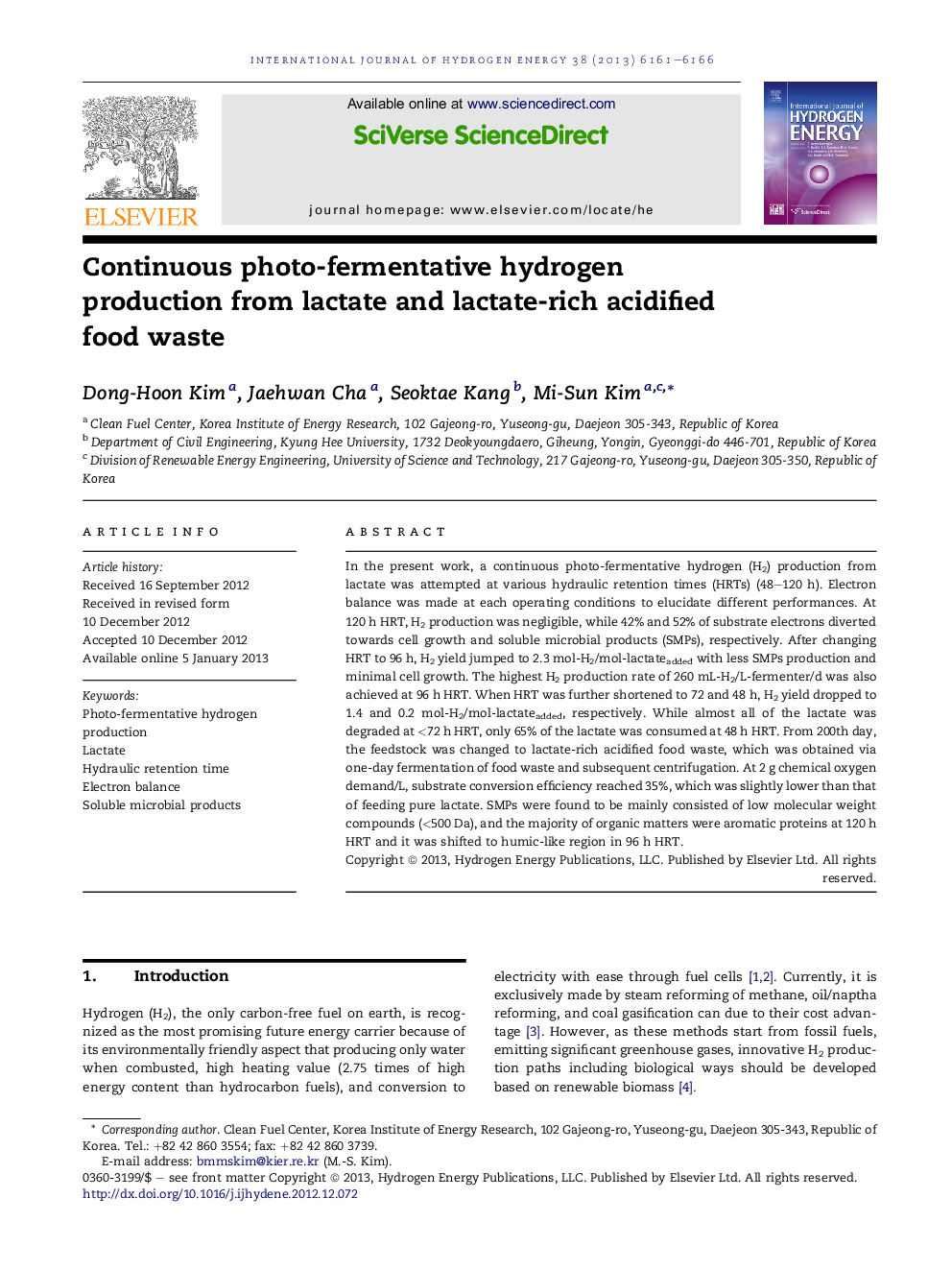| کد مقاله | کد نشریه | سال انتشار | مقاله انگلیسی | نسخه تمام متن |
|---|---|---|---|---|
| 1281735 | 1497531 | 2013 | 6 صفحه PDF | دانلود رایگان |

In the present work, a continuous photo-fermentative hydrogen (H2) production from lactate was attempted at various hydraulic retention times (HRTs) (48–120 h). Electron balance was made at each operating conditions to elucidate different performances. At 120 h HRT, H2 production was negligible, while 42% and 52% of substrate electrons diverted towards cell growth and soluble microbial products (SMPs), respectively. After changing HRT to 96 h, H2 yield jumped to 2.3 mol-H2/mol-lactateadded with less SMPs production and minimal cell growth. The highest H2 production rate of 260 mL-H2/L-fermenter/d was also achieved at 96 h HRT. When HRT was further shortened to 72 and 48 h, H2 yield dropped to 1.4 and 0.2 mol-H2/mol-lactateadded, respectively. While almost all of the lactate was degraded at <72 h HRT, only 65% of the lactate was consumed at 48 h HRT. From 200th day, the feedstock was changed to lactate-rich acidified food waste, which was obtained via one-day fermentation of food waste and subsequent centrifugation. At 2 g chemical oxygen demand/L, substrate conversion efficiency reached 35%, which was slightly lower than that of feeding pure lactate. SMPs were found to be mainly consisted of low molecular weight compounds (<500 Da), and the majority of organic matters were aromatic proteins at 120 h HRT and it was shifted to humic-like region in 96 h HRT.
► Photo-H2 production was significantly affected by HRT.
► The highest H2 yield of 2.3 mol-H2/mol-lactateadded was achieved at 96 HRT.
► SMPs accumulation was a major electron sink for reducing H2 production.
► From actual food waste, 40% of substrate conversion efficiency was achieved.
► SMPs characterization using SEC and EEM.
Journal: International Journal of Hydrogen Energy - Volume 38, Issue 14, 10 May 2013, Pages 6161–6166